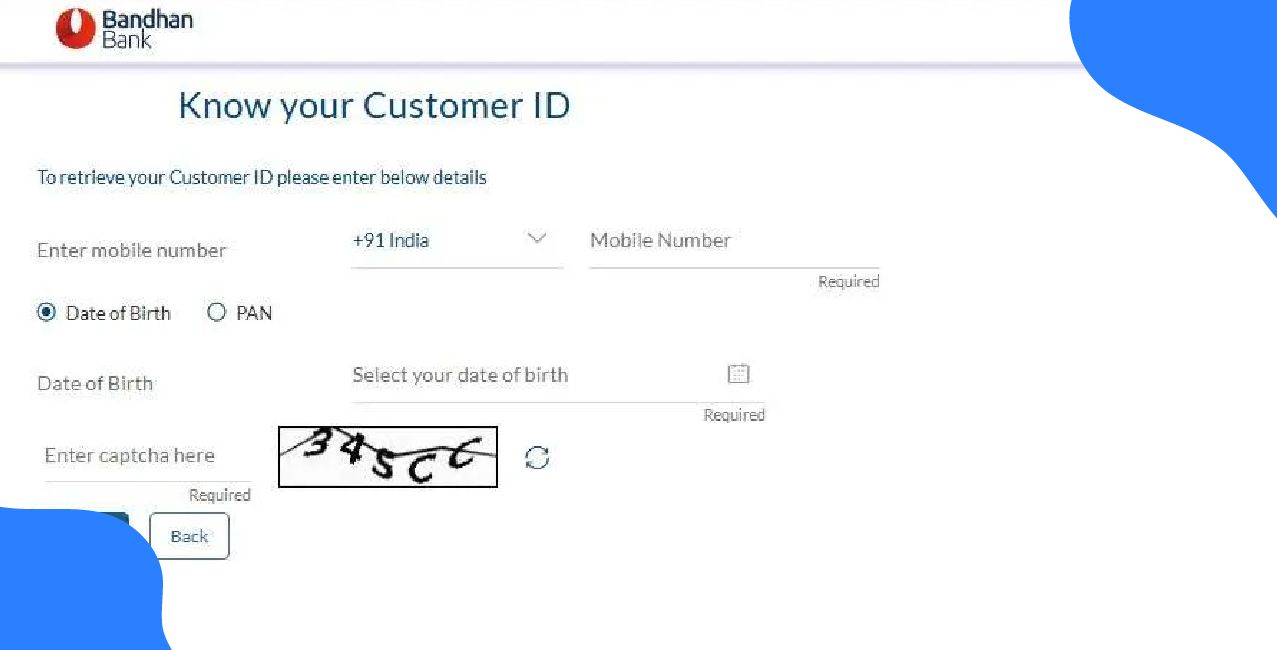
Author
LoansJagat Team
Read Time
6 Min
01 Jul 2025
GST on LIC Premium – Tax Rates, Exemptions & Payout Impact
For Example, Vignesh is a private school teacher with a monthly salary of ₹ 40,000. He decides to secure a financial future for himself and his family members. So he takes a Life Insurance Corporation policy for an annual premium of ₹ 35,000. He wonders about the inclusion of 18 % GST – Goods and Services Tax.
The agent explains that all the insurance premiums come with 18 % GST. So this is how the calculations work for Vignesh:
So, Vignesh pays ₹ 6,19,500 (₹ 41,300 * 15 years) for the fifteen years. He asks the agent about its benefits. He enlightened him about its returns:
Maturity amount of ₹ 7,00,000 in 15th year, after paying all premiums
Additional bonus amount of ₹ 15,000
Death Coverage to the insurer’s family members worth ₹ 8,00,000
However, not all the LIC premiums incur the same GST rates. Each polices’ plan attracts different GST rates. This blog enlightens on GST rates on LIC premiums.
Why did Vignesh prefer the LIC policy?
You may find the above-mentioned calculations as the answer, but there are also other things.
1. Reliability
Vignesh do not need to worry about price fluctuations like the stock market. All he needs to do is pay his premium amount of ₹ 41,300 for fifteen years.
2. Reasonable Amount
A single premium of ₹ 41,300 for a year is quite reasonable. But for investments like mutual funds and the share market, additional amounts like processing fees of at least ₹ 3,000 are charged.
3. Minimum Documentation
Vignesh needs to furnish only his ID proof and a photocopy of his bank passbook. There is no necessity to attach other documents like a credit report, and to prove his worth by showing 750 as his CIBIL score.
4. One Bank Account
For investments like the stock exchange, Vignesh would have opened a savings bank account, a trading account, a demat account, and a broker’s depository ID. Each incurs separate charges, like at least ₹ 500 to ₹ 1,000. But for LIC premiums, a single bank is enough.
List of GST Rates for Different Plans
There are different premium plans in LIC, which attract different GST rates. Now, what happens if Vighesh take any of these different plans from LIC? Let’s check with each subheading!
1. GST on Premium Plans
There is already an active LIC policy on Vignesh’s name. Still, he wonders if he is eligible to take another plan? – The answer is yes! Anyone can take any number of LIC premium plans as long as they can pay. So this is his new plan:
- LIC Policy Number: 11177789
- Base Amount: ₹ 15,000
- GST @ 18 %: ₹ 2,700
- Total Premium for fifteen years: ₹ 17,700
2. GST on Premiums of LIC Endowment Plans
Vignesh wants to expand his financial scope by building massive wealth at the time of his retirement. So he needs a lump sum amount in the future. So he checks how the LIC Endowment Plan will work?
- Sum Assured: ₹ 15,00,000
- Number of Terms: 15 years
- Premium Amount: ₹ 80,000 per annum
- GST on First Year: 4.5 %
- Total Premium Amount on First Year: ₹ 83,600 (₹ 80,000 + ₹ 3,600)
- GST on Second Year: 2.25 %
- Total Premium Amount on Second Year: ₹ 81,800 (₹80,000 + ₹ 1,800)
- From Second Year Onwards: ₹81,800
- Total Premiums Paid for fifteen Years: ₹ 12,28,800
Vignesh becomes happy that his premiums, with GST inclusive, will have a growth rate of 18 %.
3. GST on LIC Pension Plans or Annuities
Now Vignesh imagines himself in his retirement age of 60 years - He knows he is not going to get a monthly pension, except the gratuity amount. But somehow, he needs an equivalent to his monthly pension or salary. So he wonders howthe LIC Jeevan annuity policy can help him every month.
So Vignesh examines the policy details:
- Single Premium Amount: ₹ 12,00,000
- GST Rate: 1.8 % (₹ 21,600)
- Total Premium to Pay: ₹ 12,21,600 (₹ 12,00,000 + ₹ 21,600)
Now, Vignesh will receive ₹ 8,653. This is based on the following calculations, as per the policy norms:
- Total Premium: ₹ 12,21,600
- Interest for Premium: 8.5% (₹ 1,03,836 per year)
- Monthly Instalment: ₹ 8,653 (₹ 1,03,836/12 months)
Note: The annual premium can be converted into monthly instalments or single payments
Read More – What Is Life Insurance and Why Is It Important
In this, Vignesh saves his retirement life, hoping for peace and financial security.
4. GST on LIC’s Unit Linked Insurance Plan
What if Vignesh prefers LIC’s Unit Linked Insurance Plan, abbreviated as ULIP? Under this policy, Vignesh’s money grows every year, and he also gets benefits from it.
Here is the plan given by the agent to Vignesh:
- Sum Assured: ₹ 12,00,000
- Annual premium: ₹ 1,50,000
- GST charges on ULIP: 18 %
Here, the GST is incurred not on the premium amount, but on the other procedures, such as:
- Premium Allocation Charge: ₹ 4,500
- Policy Processing Charge: ₹ 2,500
So the total amount is ₹ 8,260 (₹ 7,000 + ₹ 1,260). Apart from this, as per the policy, Vignesh pays the premium amount of ₹ 1,50,000, which does not consist of any GST charges.
5. GST on LIC’s Health Plans
Vignesh’s friend Raju got admitted to the hospital and was unable to afford the medical bills, though it was required. So, Vignesh thought of taking a LIC Health Plan called Jeevan Arogya. The policy agent explained to him the following details:
- Health Coverage: ₹ 4,500 per day
- Annual Premium Amount: ₹ 20,000
- GST @ 18 %: ₹ 3,600
- Total Premium Payable: ₹ 23,600
So Vignesh imagined that, if he got admitted to the hospital for seven days, he could receive ₹ 31,500 (₹ 4,500 * 10 days). Besides, the policy also promised him a bonus of ₹ 3,000. So, he could receive an amount of ₹ 34,500 (₹ 31,500 + ₹ 3,000).
Also Read - How to Surrender LIC Policy – Step-by-Step Guide
6. GST on Late Fees
This month, Vignesh does not pay his premium amount of ₹ 15,000, excluding GST charges, before the deadline. Now he needs to pay the late fees. According to the LIC policy’s rule, ₹ 0.50 for every ₹ 100 is charged. So this is how the calculation works:
- Base Amount: ₹ 15,000
- Late Fee: ₹ 0.50 for every ₹ 100
- So the total amount is ₹ 150 for every ₹ 100 for the base amount ₹ 15,000
- GST Charges @ 18: ₹ 27 (₹ 150)
- Total Payable amount: ₹ 15,177 (₹ 15,000 + ₹ 150 + ₹ 27)
However, Vignesh wondered why even late fee charges attract 18 % GST charges.
Conclusion
Today, GST charges have become an undeniable charge on various sectors. Although there are some exceptions given, still, its role in the LIC premiums worries many people. However, when the policy matures, the maturity amount can exceed the total GST charges of the premium. So one needs to worry about the GST charges and should concentrate on completing the policy to its full term, without defaulting.
FAQs
1. Who can take an LIC policy?
Anyone who can pay its premium can take a LIC policy.
2. Does it have tax exemptions?
Yes, LIC policies can have tax exemptions under the Income Tax Act 1961 of Section 80C.
3. Can I trust LIC agents to take a policy?
Yes, you can trust them. They will guide you about the LIC policy, depending on your income level.
4. Can I make pre-closure of a LIC policy?
Yes, you can have pre-closure of a LIC policy, but it is subject to certain terms and conditions.
5. Is it mandatory to submit income proof?
All LIC policies do not require you to provide income proof, with some exceptions for certain large policies.
Other Important GST Pages | ||||
About the Author

LoansJagat Team
‘Simplify Finance for Everyone.’ This is the common goal of our team, as we try to explain any topic with relatable examples. From personal to business finance, managing EMIs to becoming debt-free, we do extensive research on each and every parameter, so you don’t have to. Scroll up and have a look at what 15+ years of experience in the BFSI sector looks like.

Quick Apply Loan
Subscribe Now


